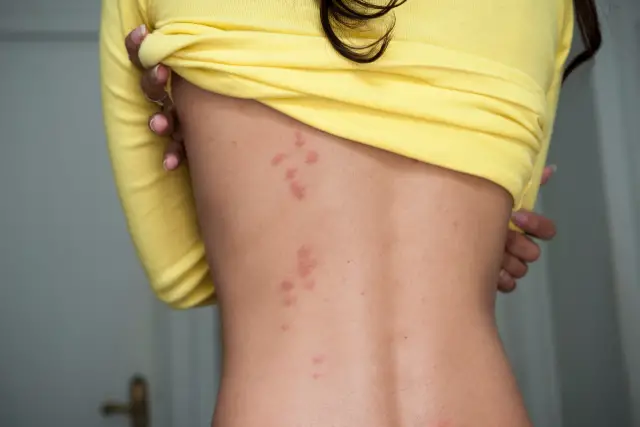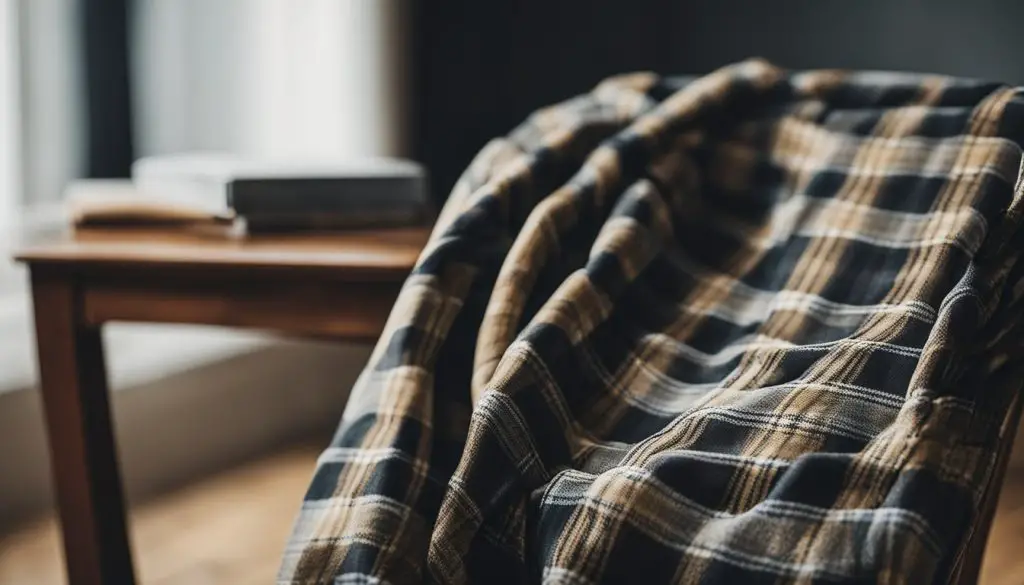A common question that arises concerning these pests is can bed bugs bite through clothes. While bed bugs are opportunistic feeders, their physical mechanics of biting usually involve finding exposed skin rather than penetrating clothing.
Understanding the habits of bed bugs is crucial for prevention, control, and knowing when to take action if an infestation occurs. Being aware of how to identify and manage bed bug bites can alleviate concerns and help in seeking the appropriate remedies or professional assistance.
Key Takeaways
- Bed bugs feed on blood, usually without passing through clothing.
- They navigate around clothing to find accessible skin to bite.
- Proper identification and control are essential in addressing bed bug issues.
Myths & Facts About Bed Bug Bites
Bed bugs are a common concern, especially when it comes to their feeding habits and whether they can bite through clothing. Let’s dispel myths and establish the facts.
- Myth: Bed bugs can bite through any type of clothing.
- Fact: Bed bugs generally cannot penetrate through clothing. They require direct skin contact to feed on blood.
- Myth: Infestations are only found in mattresses and beds.
- Fact: Bed bugs can inhabit various areas, including furniture, sheets, and any hidden crevices in a room.
Keep in Mind
Bed bugs require blood to survive and reproduce, but they need access to exposed skin to feed. They are known for hiding in tight spaces such as mattress folds, gaps in furniture, and cracks in walls before emerging to feed at night.
Infestations can occur in any environment, but high-turnover places like hotels are particularly at risk.
Addressing an infestation requires thorough cleaning of all affected areas including furniture and bedding, as well as professional extermination methods.
patterns and characteristics of Bed Bug Bites
Understanding how bed bugs feed and what their bites look like is crucial in identifying and managing an infestation. Let’s look at their feeding patterns and the physical characteristics of the bites they leave.
Feeding Patterns
Bed bugs are nocturnal insects that prefer to feed on your blood at night, typically while you sleep. Their feeding session generally lasts between 3 to 10 minutes until they become engorged with your blood. After feeding, they retreat to their hiding places.
You may not feel the bites immediately, as bed bugs inject an anesthetic-like substance to reduce the chances of you noticing them. The patterns of the bites often appear in clusters or lines, hinting at the trajectory of the bug as it moves across your skin.
- Timing: Preferably night
- Duration: 3-10 minutes
- Method: Stealth feeding with an anesthetic substance
- Appearance: Bites often in clusters or lines
Physical Characteristics of Bites
The aftermath of a bed bug’s feed is typically a set of small, itchy welts on your skin. These welts may present as reddish-brown and inflamed due to the reaction your body has to the bites. Common areas where you might notice the bites include exposed skin such as your face, arms, and neck.
- Appearance: Small, itchy welts
- Color: Reddish-brown
- Common Areas: Face, arms, and neck
- Skin Reaction: Inflammation and itchiness
Each bite might also be accompanied by a tiny blood stain on your sheets, which is a residual mark from the feeding. Not everyone reacts the same way to bed bug bites, and some may not react at all, while others may experience significant discomfort and visible bite marks.
Can Bed Bugs Bite Through Clothes?

Your concerns about bed bugs and your clothing are well-founded. Below, you’ll find detailed information about bed bug bites in relation to skin exposure and the effect of clothing as a barrier.
Bed Bug Bites on Exposed Skin
Bed bugs prefer to feed on exposed skin rather than biting through clothing. They typically do this undetected by releasing an anesthetic and an anticoagulant. It’s crucial to check commonly exposed areas like the arms, neck, and face.
Clothing as a Barrier
Clothing, while not a foolproof barrier, can reduce the probability of bites. Bed bugs are unlikely to bite through thicker fabrics but may manage to feed through thin layers. To minimize risk, opt for tightly woven materials and be cautious of clothes with gaps or tears where bed bugs might infiltrate.
Prevention and Control
To effectively protect yourself from bed bug bites and control an infestation, it’s imperative to combine proactive measures with tried-and-true home remedies. Implementing the right strategies can help ensure both prevention and mitigation.
Proactive Measures to Prevent Bites
- Inspect Accommodations: When traveling, carefully inspect the hotel room, particularly the furniture and mattress seams, for signs of bed bugs before unpacking your luggage.
- Use Protective Covers: Invest in bed bug-proof covers for your mattresses and pillows to prevent infestation.
Home Remedies
- High Heat: Wash your bedding and clothing at high temperatures (around 120°F or higher) and use a dryer on a high-heat setting for at least 30 minutes to eliminate any present insects.
- Seal Cracks: Regularly check and seal cracks in your home’s foundation, between baseboards, and around windows and doors to prevent entry of bed bugs.
By taking these initiatives, you can protect your living space against bed bugs and reduce the likelihood of being bitten. Furthermore, should you discover an infestation, seek professional pest control services to administer the appropriate treatments for thorough eradication.
When to Seek Professional Help
Determining the right time to call in a professional or seek medical help is crucial if you’re dealing with bed bug bites or suspect a severe infestation in your home.
Recognizing Severe Infestations
Signs You May Have a Severe Infestation:
- You notice large groups of bed bugs in multiple areas of your home.
- Daily sightings of bed bugs on mattresses, furniture, or walls.
- Your bedroom has a distinctive musty odor, which can be a sign of an established infestation.
- Numerous bites appear on your skin, even after taking precautionary measures.
If you experience any of these signs, it’s time to contact a professional pest control service. They can provide a thorough inspection and a comprehensive treatment plan.
Medical Treatment for Bed Bug Bites
Understanding When Medical Attention Is Needed:
- If bites are accompanied by severe itching, redness, or swelling beyond mild discomfort.
- In case of an allergic reaction to bed bug bites, which could manifest as intense redness, swelling, or hives.
- Persistent symptoms that do not improve after using over-the-counter treatments like steroid creams or antihistamines.
If you’ve tried self-care measures and your symptoms persist or worsen, it is appropriate to seek medical attention to ensure proper treatment and avoid complications.
Frequently Asked Questions
Bed bugs can be a nuisance and understanding their behavior is essential to prevent and manage bites. Here are the specifics on how they interact with clothing and skin, along with effective prevention strategies.
Do bed bugs bite on exposed skin or under clothing only?
Bed bugs prefer exposed skin but can also crawl under loose-fitting clothing to feed on your blood. They cannot bite through fabric.
How can one prevent bed bug bites effectively?
To prevent bed bug bites, maintain a clean sleeping area, use protective covers for mattresses and pillows, and conduct regular inspections of your bed and furniture, especially if you have recently traveled or purchased used items.
What to do to avoid bed bug bites while sleeping?
To avoid bed bug bites while sleeping, encase your mattress and box spring with bed bug-proof covers, keep your bed away from walls and furniture, and remove any clutter from your bedroom that bed bugs could use as hiding spots.



